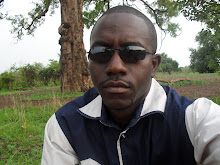By Ebrima BALDEH
Another batch of Development Journalism is currently underway at Indian Institute of Mass Communication. No wonder, some people say time and tide wait for no one, which means that so many things can happen within a relatively short period of time. And you start asking how it all started and ended.
This latest batch is the 54th since the course started in the 1960s. By the time, we arrived at the Indira Gandhi International Airport, my colleague Pierre YS Sylva was equally worn out after a long and laborious journey to the Indian subcontinent. It was at the Bole International Airport in Addis Ababa that we started to question the vagaries of the weather in Asia, and how it was going to shape our minds about a place that remains enigma – at a time when the attack on Mumbai was fresh in the minds of every Indian. So what are we going to do in New Delhi?
My first encounter with this question started years back when I was still a small boy watching Indian films, about love struggles, war and horror. It was the facial beauty of her people and the magic that sparked my interest in Indian films, I realized that unlike other films, the Indian films are undeniably striking and mostly sub-titles because the Indians would like to maintain their identities to stand out.
So upon arrival at the IGI airport, I touched down, expecting to see something exciting and different from I was coming from, The Gambia, with a population of one million and 600 thousand people.
I saw massive buildings especially the ones close to the airport, the roads were also in fantastic shape. Security was not as heightened as the some TV channels reported few weeks before we embarked on the journey. The Indian Institute of Mass Communication officer who was at the airport to welcome us, Mr. Tiwari, did not encounter some problems meeting us, the Ethiopian flight that brought us had a two hours delayed in Addis Ababa so I wonder how he managed to wait at that busy airport. I don’t know whether it was by provident, in a matter of minutes four African brothers namely Chukwudi, Temwa, Pierre and me stood before Mr. Tiwari who had realized that we were the newest IIMC students. We decided to shake hands, exchange pleasantries; it was just like we have signed to strengthen relations between Zambia and Nigeria when we found that we were all in Delhi for the same mission. Temwa from Zambia had sported a black sweater, while Chukwudi from Zambia was there talking to our handler, what’s next?
We passed dozens of taxi drivers, and ended up in a vehicle that took us to the IIMC campus, while I was anxious to reach the campus, I was watching the places that had constantly attracted my attention, road construction. I was trying to reconnect with the volume of work that I had left in The Gambia, the road construction projects embarked upon by the President Jammeh administration. There were series of sign boards indicating construction work was going on.
By the time I arrived at the campus, I felt that I have had useful lessons already; if anything I have started compiling notes and I thought that would help me to reconnect with whatever lessons offered in the IIMC lecture room.
@ Priya market
My first outing was at Priya market with Jesus Hector Betancourt, a Mexican who like Chabby Barasa from Tanzania where the first to arrive at the school, so I went with Jesus to change some few dollars to Rupees, so that I can buy some basic necessities before I receive my monthly allowance from the Institute. It was the masala tea at ‘My passion’ restaurant that provided the unique opportunity for me to discover a new friend in Delhi, Jesus.
While on a rickshaw, (batch car) we call it in The Gambia, we headed to the campus, and suddenly I saw some people on top of what look like a small hill living in squalid houses, I did not say anything, I suspect that my Mexican had realized this that’s was why he asked me ‘do you have such conditions in The Gambia. I told him that we don’t have people in slums in the City, not even in the village. Of course, we have very poor people there, but they have at least shelter they call home.
But this was one of the contradictions you face when you are studying development, you come across all sort of challenges, of course such things will always present themselves, for example the best roads in India’s capital have been described by the press as ‘killer highways’. Yet, when the society would call it development when roads are constructed to facilitate the growing number of road users.
Some people are becoming richer every day, while others believed they have had enough, they want to end their lives once for all, since they could not get what they want.
[To be continued…
Wednesday, August 5, 2009
Subscribe to:
Post Comments (Atom)




No comments:
Post a Comment